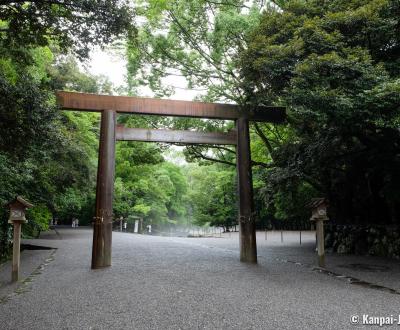Ise Jingu
Japan’s Holiest Shinto Shrine
Ise Jingu is a vast and very important Shinto compound located in Ise, in Mie prefecture. It oversees 125 jinja shrines scattered throughout the city and its surroundings, including the two main ones: Kotai-jingu (Naiku) and Toyo'uke-daijingu (Geku). An essentially sacred place, Ise Grand Shrine is a reminder of the ancient times and origins of Japanese civilization and attracts each year more than 4 million visitors, mainly Japanese.
Ise Grand Shrine overlaps the small town of Ise, that shelters two of the main and more important sites of the complex:
- Kotai-jingu or Naiku, the inner shrine, and,
- Toyo'uke-daijingu or Geku, the outer shrine.
Located 5 kilometers away from each other, they can be reached by successively walking and riding a bus, of which shuttles are frequent. When arriving from Ise station, the tour starts by Geku, then exits downtown Ise by the Oharai-machi shopping street that connects to the entrance of Naiku, nestled in the forest area of Ise.
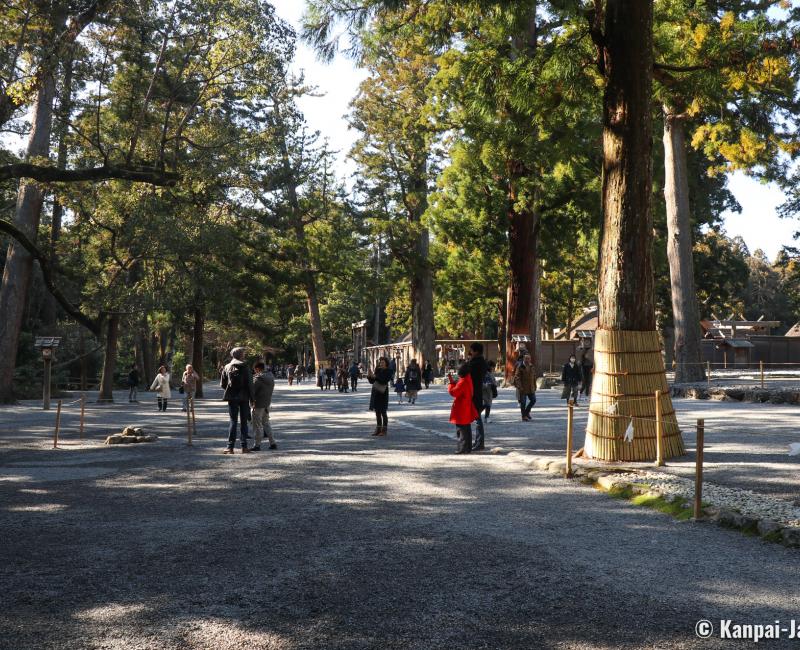
The introduction: the main sanctuary Geku
The origins of Toyo'uke-daijingu date back to 1,500 years ago. The Shinto site is dedicated to Toyo’uke no Omikami, the goddess of agriculture and harvests. Also associated with food, clothing, and home, she is the guarantor of the everyday essentials and serves the kami enshrined in Kotai-jingu.
The visit of Geku Outer Shrine is an introduction to the Shinto pilgrimage of Ise Grand Shrine and allows the immersion in the place’s spiritual atmosphere. Geku shares with Naiku:
- A similar layout of its pavilions,
- An ancient architecture of shinmei-zukuri style, designed to be rudimentary with raw wood materials,
- The harmonious blending of the constructions in the green setting of the forest, and,
- The omnipresence of water, the purifying element flowing abundantly in the shrine’s grounds.
Geku’s grounds are also sheltering Sengukan Museum, dedicated to the Shikinen Sengu ritual. The exhibition is interesting and educational and displays an impressive life-size replica of Geku’s main pavilion.
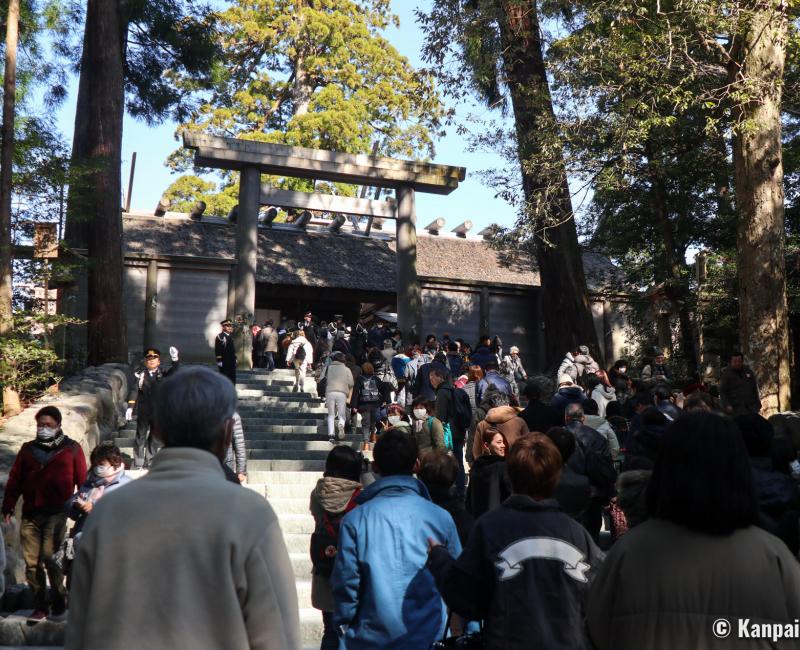
The highlight: the main sanctuary Naiku
Kotai-jingu is 2,000 years old and Japan's most sacred Shinto site. Dedicated to sun goddess Amaterasu Omikami, it is tightly related to the Emperor who is said to be a direct descendant of the deity. Naiku’s main pavilion is by the way the receptacle of the Holy Bronze Mirror, one of the three divine regalia of Japan’s Imperial Treasure.
At the entrance of the sacred grounds, Ujibashi bridge, which is more than 100 meters long, crosses Isuzu-gawa river and symbolizes the passage from the earthly world to the territory of gods. The sanctuary is characterized by its greatness and simplicity. Pilgrims consider natural elements as holy as the pavilions and have developed the habit of stroking the trunks of the trees. However, as this repeated gesture was harmful to the trees, protective mats have been placed at their base to prevent bark deterioration.
Both sites, Naiku and Geku also include affiliated shrines dedicated to different kami deities, such as one worshiping the gods of wind and rain ☔️, one dedicated to prayers for the collective happiness and one for individual happiness.
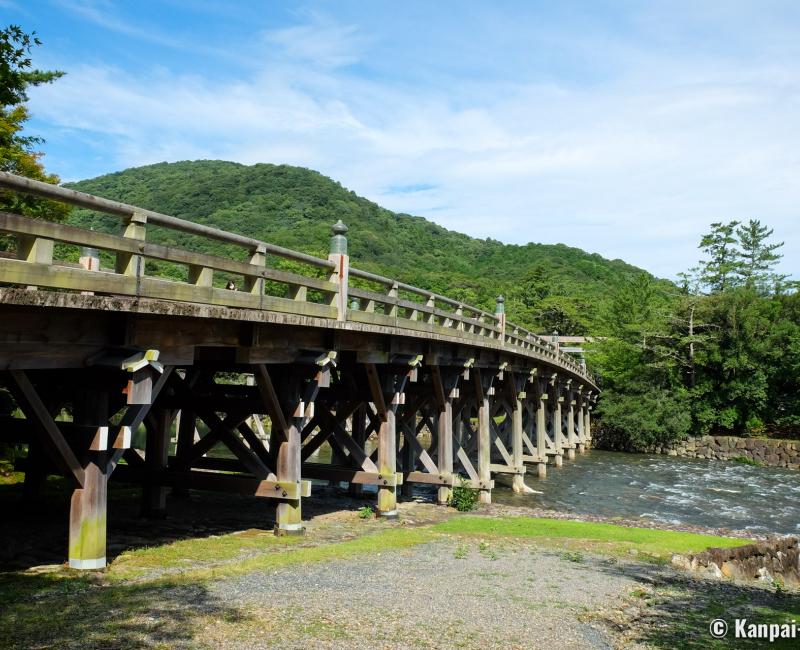
The reconstruction ritual: Shikinen Sengu
Specific to Ise Jingu, the Shikinen Sengu ritual consists in rebuilding a brand-new shrine, next to and identical to the former one. This ritual is performed for about fifteen shrines of Ise Jingu, including Naiku and Ujibashi bridge, and Geku. In each of the holy grounds, an empty space is dedicated to the reconstruction of the new shrine, to avoid moving out the goddess Amaterasu and Toyo'uke.
About 2,000 artisans and carpenters are involved in the Shikinen Sengu ritual lasting several years, during which they recreate the buildings, but also the furniture, ornamentations, and divine treasures faithfully. It is performed every 20 years and the next reconstruction is scheduled in 2033.
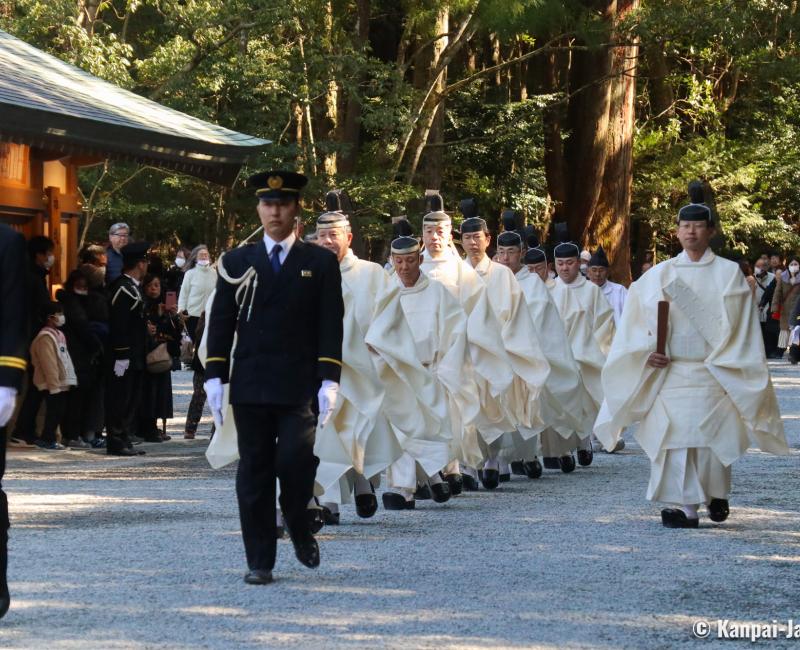
Ise Grand Shrine is a wonderful place, majestic and imbued with a strong spirituality. There are 1,500 Shinto rituals and ceremonies celebrated each year, to pray for the imperial family’s prosperity, peace in the country and bountiful harvests (especially of rice!). It is a must-see pilgrimage for anyone interested in the Shinto cult in Japan and can be completed afterwards by a visit to Kongosho-ji temple at the top of Mount Asama.

